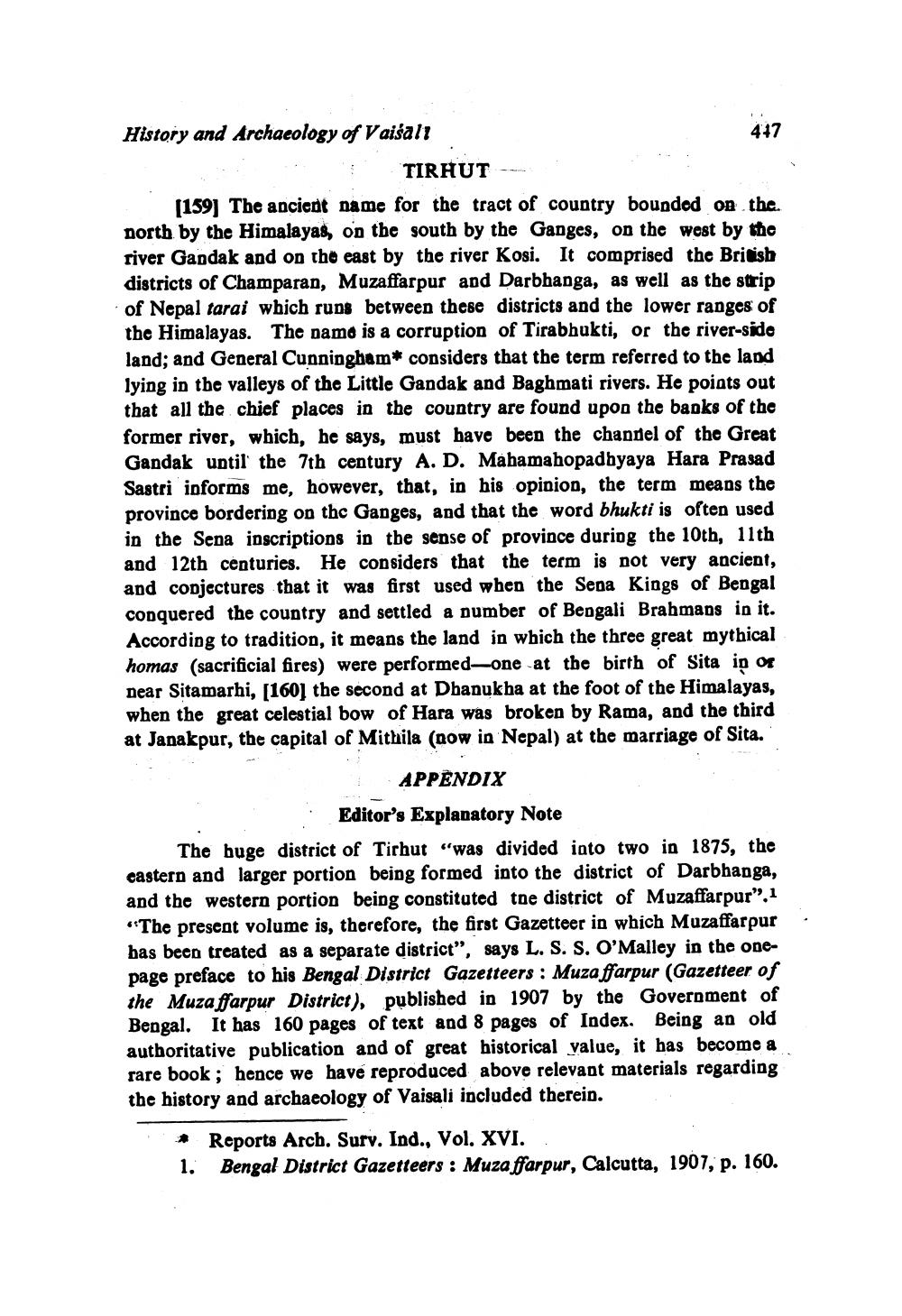________________ History and Archaeology of Vaisali 417 TIRAUT [159] The ancient name for the tract of country boundod on the. north by the Himalayas, on the south by the Ganges, on the west by the river Gandak and on the east by the river Kosi. It comprised the British districts of Champaran, Muzaffarpur and Darbhanga, as well as the strip of Nepal tarai which runs between these districts and the lower ranges of the Himalayas. The name is a corruption of Tirabhukti, or the river-side land; and General Cunningham* considers that the term referred to the land lying in the valleys of the Little Gandak and Baghmati rivers. He points out that all the chief places in the country are found upon the banks of the former rivor, which, he says, must have been the channel of the Great Gandak until the 7th century A. D. Mahamahopadhyaya Hara Prasad Sastri informs me, however, that, in his opinion, the term means the province bordering on the Ganges, and that the word bhukti is often used in the Sena inscriptions in the sense of province during the 10th, 11th and 12th centuries. He considers that the term is not very ancient, and conjectures that it was first used when the Sena Kings of Bengal conquered the country and settled a number of Bengali Brahmaps in it. According to tradition, it means the land in which the three great mythical homas (sacrificial fires) were performed-one at the birth of Sita in or near Sitamarhi, [160] the second at Dhanukha at the foot of the Himalayas, when the great celestial bow of Hara was broken by Rama, and the third at Janakpur, the capital of Mithila (now in Nepal) at the marriage of Sita." . APPENDIX Editor's Explanatory Note The huge district of Tirhut "was divided into two in 1875, the castern and larger portion being formed into the district of Darbhanga, and the western portion being constituted the district of Muzaffarpur". 1 "The present volume is, therefore, the first Gazetteer in which Muzaffarpur has been treated as a separate district", says L. S. S. O'Malley in the onepage preface to his Bengal District Gazetteers : Muzaffarpur (Gazetteer of the Muzaffarpur District), published in 1907 by the Government of Bengal. It has 160 pages of text and 8 pages of Index. Being an old authoritative publication and of great historical value, it has become a rare book; hence we have reproduced above relevant materials regarding the history and archaeology of Vaisali included therein. * Reports Arch. Sury. Ind., Vol. XVI. 1. Bengal District Gazetteers : Muzaffarpur, Calcutta, 1907, p. 160.




